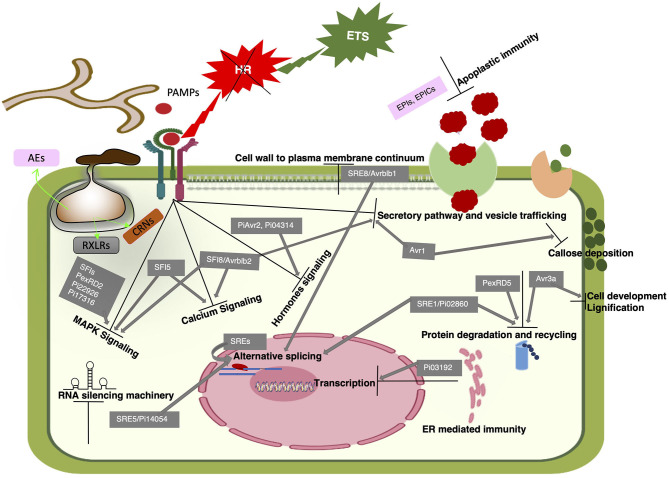Figure 2.
A proposed model of PTI to ETS transition. Phytophthora spp. deploy multiple effectors to target various components of the host's signaling pathways, metabolic and physiological machinery to promote infection. Here we have only shown P. infestans effectors known to modulate defense responses in favor of infection. An immune component is intervened at different levels by multiple effectors acting at different locations. For example, apoplastic immunity is modulated by the action of pathogen's protease inhibitors (EPIs, EPICs) against host's proteases in the apoplast and RXLR (Avr1, Avrblb2) effectors operate intracellularly to prevent the secretion of host's proteases into the apoplast. Some effectors target multiple host proteins to interfere with different signaling pathways and also one signaling component is targeted by several effectors. For example, SFI8 interferes with calcium signaling, inhibits protease secretion into the apoplast and interferes with MAPK signaling. MAPK signaling is targeted by 11 RXLR effectors including eight SFIs. Alternative splicing is modulated by nine SREs and, SRE 1, 5, and 8 are known to target proteolysis, RNAi and cell wall to plasma membrane continuum, respectively. Most of these effectors (details in Table 2) have shown to overcome INF1 induced HR thus, indicate PTI suppression in various ways to establish ETS.

